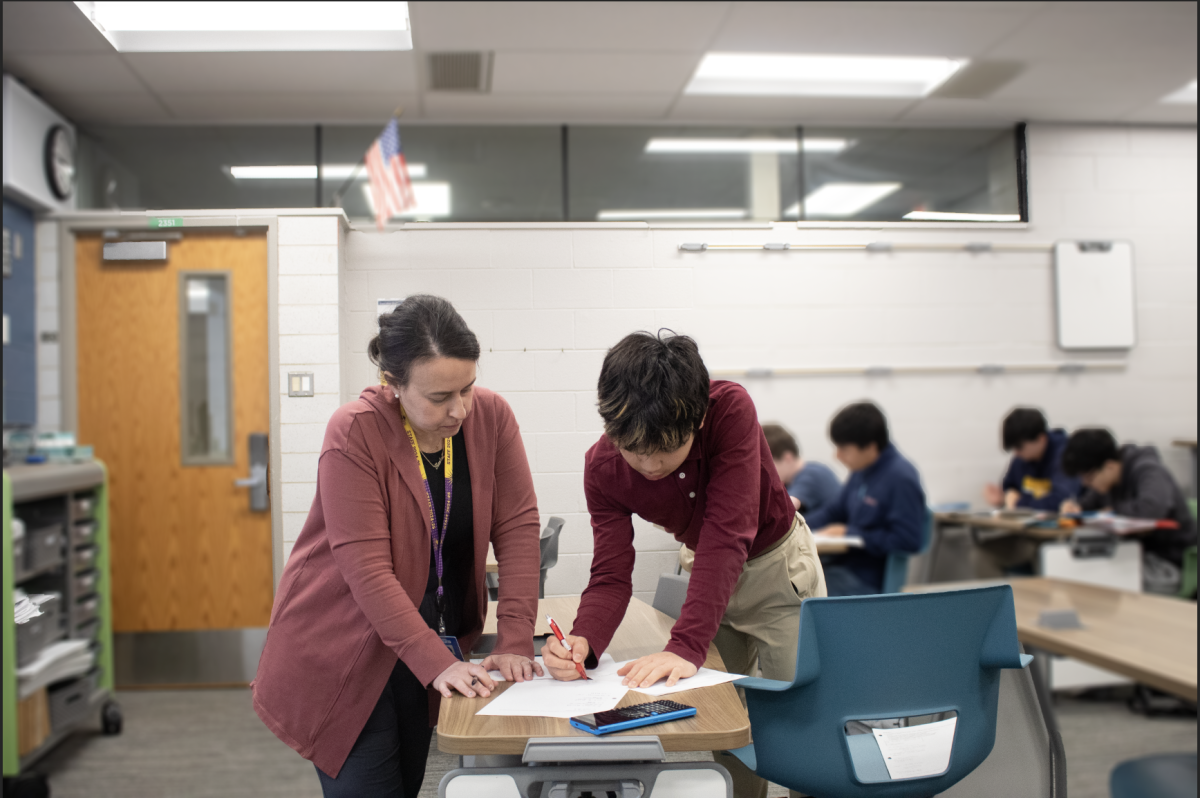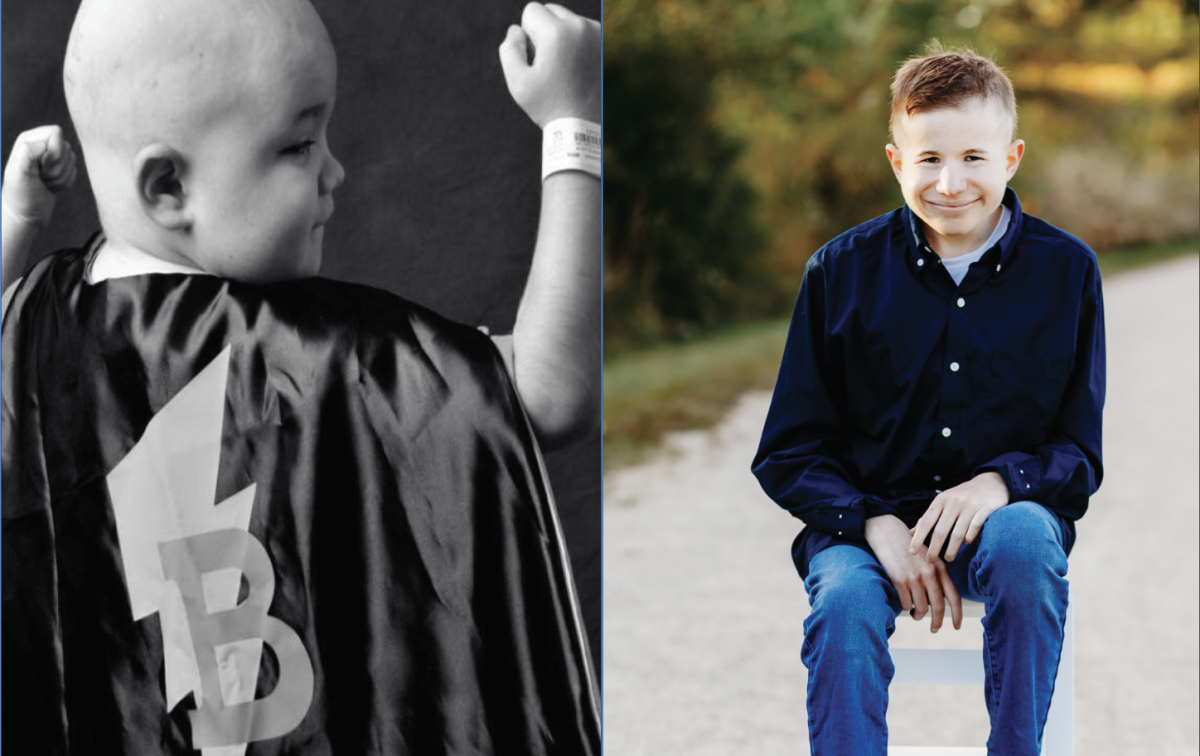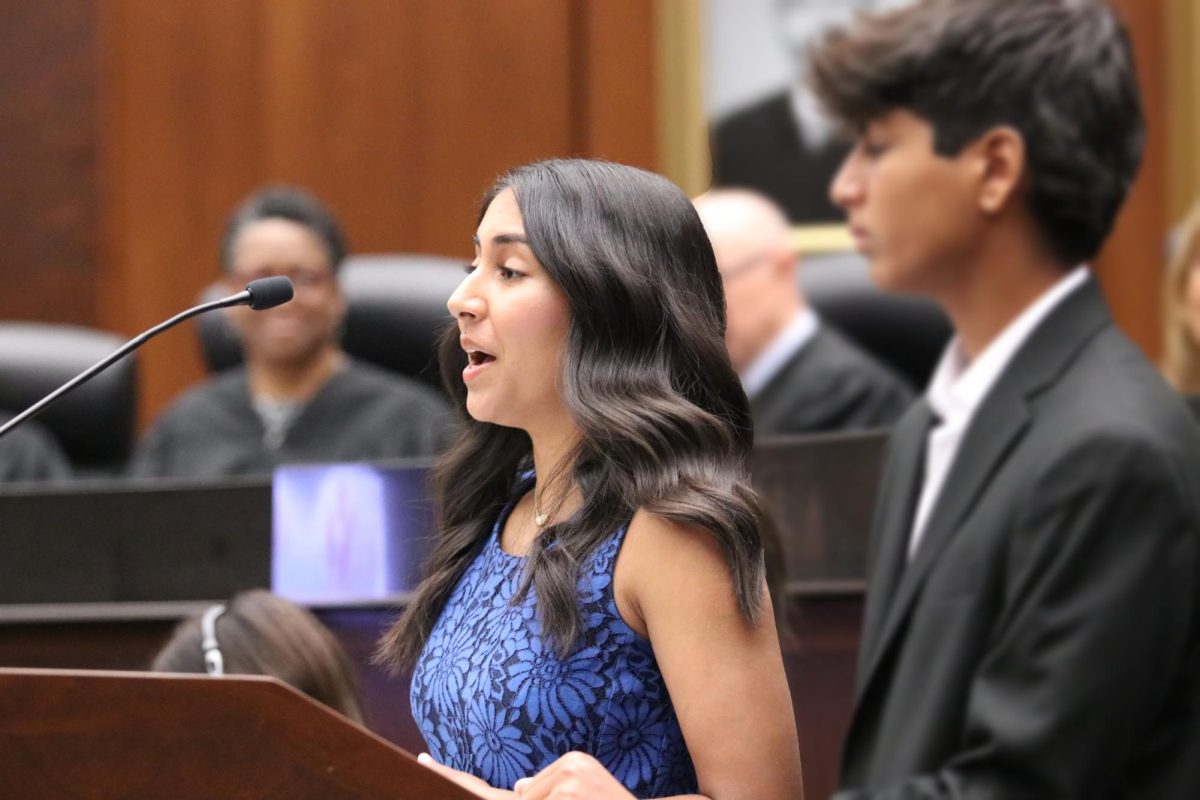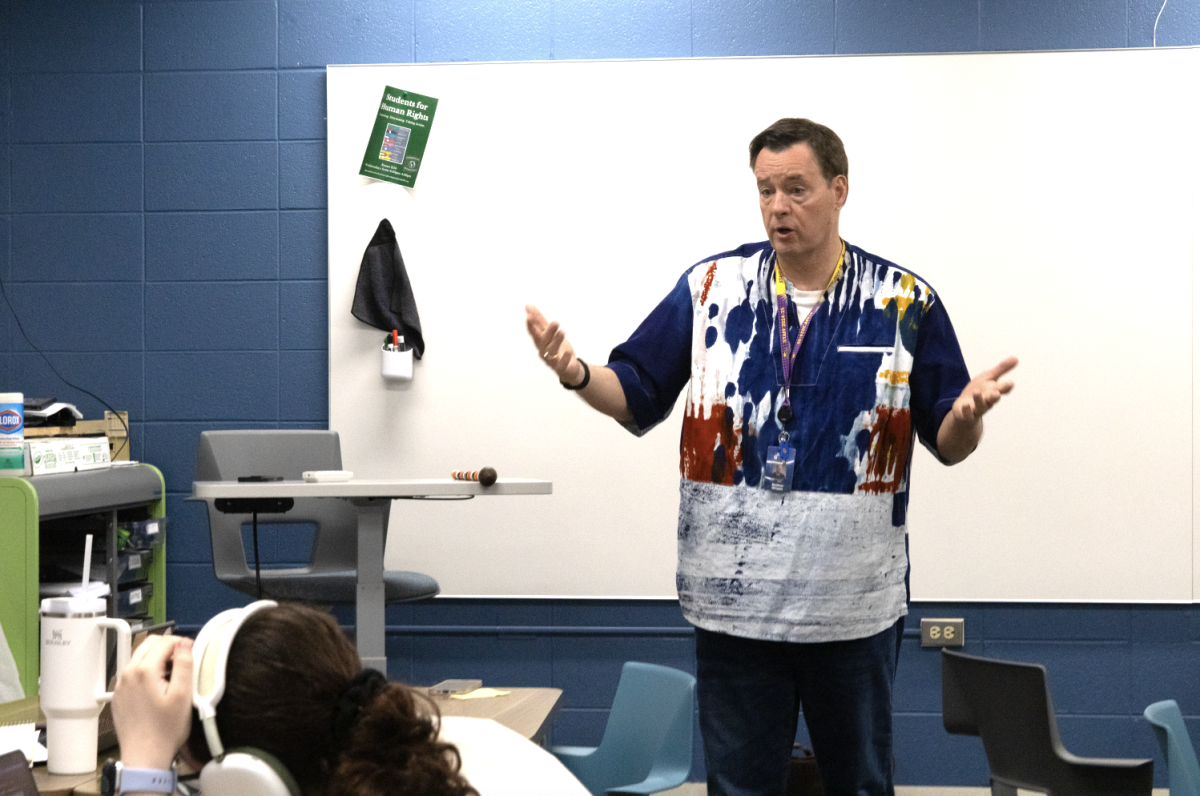1960s:
Introducing Glenbrook South
The fall of 1962 was a busy time for Glenview as Glenbrook South opened its doors in the fall. The school needed a design that accommodated 1,200 students and included an academic wing, an auditorium and a gymnasium.
One of the beginning steps for South was to choose the school colors. According to Walter Sherman, GBS’s First AD, the students voted on school colors and decided on blue and gold.
“As I sat down to order our first uniforms, a Navy jet flew overhead and I knew I had to order navy blue,” Walter said. “I also chose the same color of gold which I had ordered at Glenbrook North.”
South’s design was the vision of Dr. Norman Watson and the rest of the administrative team including Principal Dr. Sydney Salt, and his two assistants, Clifton Capp and Ken Brummel.
Dr. Watson and his team’s ideas resulted in one of the first windowless and completely air-conditioned educational buildings in the country. This enabled year-round utilization.
Pat Lundquist Hutchings, class of 1966, recalled one of his first experiences in the new building of South.
“Our first assembly was held on a dirt floor and we had to be bused to GBN for swimming class, but it didn’t matter,” Hutchings said. “We were proud to be the first class to spend four years at GBS and help establish new traditions.”
South’s population in the fall of 1962 consisted of 55 faculty members, 30 staff members and 734 freshmen and sophomores. The student government was created by the administration and faculty, which eventually led to student interest in creating clubs.
Lance Welter, class of 1967, noted how exciting it was to be some of the first to attend Glenbrook South and start a lot of the traditions that carry on today.
“When I think back on the school, it was brand new and we were so proud of it and proud that we were Titans,” Welter said. “We had seen GBS grow up and had helped pick the name.”
1970s:
Implementing Programs & Activities
In the 1970s, South started many innovative programs. The Glenbrook Peer Group counseling program, for example, began during this decade, in which chosen seniors led groups of freshmen and sophomores in communication activities each week during the school year.
Suzanne DeGrave Yudell, class of 1971, noted some changes.
“Lots happened during our four years,” Yudell said. “The dress code, which had prohibited girls from wearing slacks of any kind and banned the wearing of jeans by anyone, was ended. Open lunch privileges were given to upperclassmen [and] the practice of having boys swim in the nude during their PE classes was in place.”
Further changes occurred in the Home Economics Department, where a child development course brought about the creation of “Titan Tots”, a preschool for toddlers in the area.
Graduation requirements also changed to include a minimum of six courses each semester and required credits in both applied and fine arts. Federal Title IX requirements combined the separate girls and boys Physical Education Departments in 1977 while the debate team won its first state championship.
The popular Glenbrook musical was supplemented in the performing arts area by the Variety Show, which involved more than 10 percent of the student body in its production.
Dr. Mike Nolan, class of 1978, commented on a new practice that began with the Variety Show while he was attending school in the ‘70s.
“Mama [Glass] bribed some football players to get into the Variety Show,” Nolan said. “It wasn’t the cool thing to do back then, [but] ended up starting a great tradition!”
David Baughma, class of 1975, recalls traditions that began during his time.
“[South] marched in the Rose Bowl and became the first members of the Cum Laude society,” Baughma said.
Former student, Eric Gilliland, class of 1980, remembers the positivity that he felt throughout the school.
“There was a general sense of having fun at the school and making it a place you’d want to come to on a Friday night for sock hop or go to see a play or go to a dance or the basketball game or football games,” Gilliland noted.
1980s:
Acknowledging Accomplishments
Throughout the 1980s, South’s innovation continued.
Some of the most talented students from the Glenbrooks took part in the four-year program, Glenbrook Academy of International Studies, which originated in 1981.
Meena Wadhwa, class of 1983, noted that both school spirit and pride were also important to South’s community during her time at South.
“Music was an integral part of our lives, and the cafeterias were filled with music and laughter,” Wadhwa said.
Technology thrived in the 1980s beginning with the creation of South’s first computer lab in the Mathematics Department, known as the “Apple Orchard.” Desktop computers replaced typewriters in the Business Education Department in the early 1980s, and the IMC invested in computers with the capability of online searching.
Brian Bartsch, class of 1981, noted that the opening of the “Apple Orchard” put Glenbrook South at the forefront in technology education. He credits South with investing wisely to benefit the community and students. Bartsch noted that he enjoyed his time at South for some of these reasons.
“To this day, I am thankful for the positive environment of GBS,” Bartsch said. “I still consider my dearest and most meaningful friendships to be the ones I made while I was there.”
A $7,000,000 construction program was also issued in 1988 due to a lack of specialization in certain facilities. The program included construction of a new field house, a performing arts complex, two elevators and a two-story academic addition, which included the Lyceum.
U.S. News & World Report rewarded South for its many advancements when they featured South as one of five schools in their cover story “What Makes Great Schools Great” in August 1984. The National Association of Secondary School Principals honored Dr. William Schreiner as the Illinois Principal of the Year in October.
Scott Rose, class of 1989, appreciated much of what made South great.
“I’ll never really truly be able to fully express my gratitude for how lucky I was to go to such a cutting edge school […] I really got a great sense of empowerment from GBS and I really feel that GBS gave me my creative voice that I still carry with me today,” Rose said.
1990s:
Broadening Horizons
The ‘90s were a time of national recognition on behalf of South.
South welcomed a new superintendent who showed leadership qualities as well as opportunities for change within the school. The student body continued to place well in ACT and Advanced Placement scores.
The amount of foreign-born students attending GBS also flourished. The Glenview community as a whole experienced a pleasant transformation from the typical Chicago suburb to a cultural melting pot. Twenty-five percent of GBS’s student body was comprised of Asian, Hispanic and African American students. This evolution illustrated the passion and curiosity of the student body and continues to carry on today.
Lindley Johnson-Caldwell, class of 1997, did not feel this diversity affected the way people were treated within the school.
“As a high school student, I knew when I walked through the doors of GBS, I would be accepted by someone, whether a teacher or fellow students,” Caldwell said. “I felt a sense of belonging.”
A change in staff came in 1993 when David Smith took on his role as principal. In total, he was employed by GBS for 37 years.
Reilly Tillman, class of 1979, noted that Smith exhibited amazing leadership skills, contributions, humor, and genuine concern about all students.
“Mr. Smith was without a doubt a backbone, ensuring that all student activities were running smoothly and everyone’s needs were met,” Tillman said.
The GBS girls’ basketball team also achieved their dream when they won the IHSA state championship in 1994. The class of ’94 won a total of ten conference championships in varsity athletics.
The ‘90s at South showcased student talent in both sports and activities. According to faculty member Katie Preuss Hoover, a South alumna, the student talent was outstanding and the foundation all the students laid at South would benefit them in the future.
“We all knew that those four years served as a springboard, catapulting us toward a new millennium, a future we were constantly urged to imagine,” Hoover said.







